No Further Records: Reşad Ekrem Koçu and the Istanbul Encyclopedia*
July 5, 2023
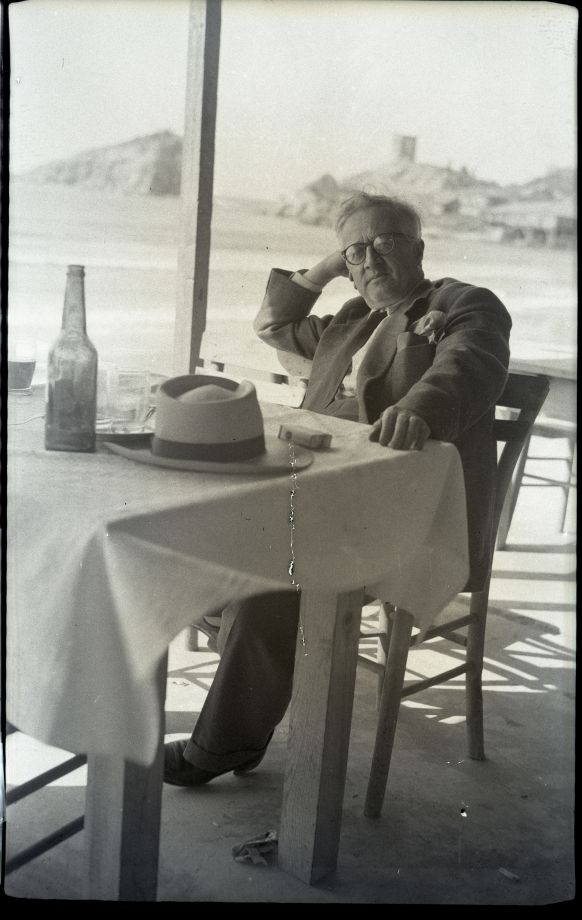
Reşad Ekrem Koçu
Kadir Has University Information Center – Salt Research, Reşad Ekrem Koçu and Istanbul Encyclopedia Archive
Kadir Has University Information Center – Salt Research, Reşad Ekrem Koçu and Istanbul Encyclopedia Archive
“This work, as it has reached its thirtieth fascicle, is insured under my honor and life. Before I fall frail and old, I wish to die while still working on this endeavor. Then… Only then… If the respective committees succeed in this endeavor after me… May they publish the last amendment I made with red ink, as the symbol of my bleeding heart.” —Reşad Ekrem Koçu1
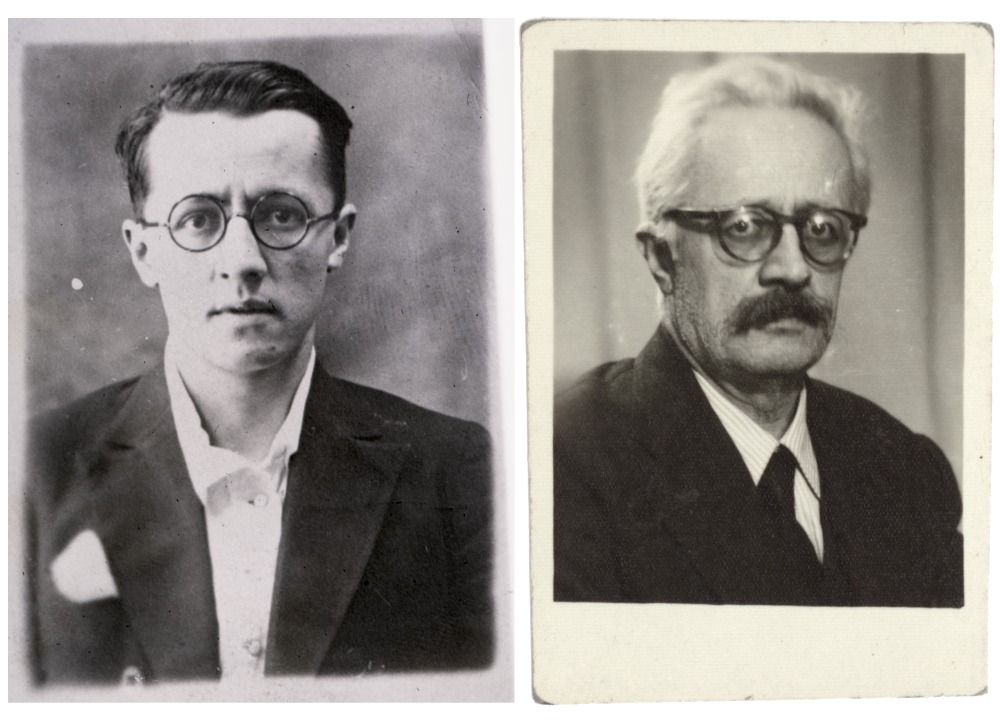
About Reşad Ekrem Koçu
Reşad Ekrem Koçu was born in Istanbul in 1905. He graduated from the Bursa High School in 1921 and the Istanbul University Faculty of Literature History Department in 1931. He was the student and assistant of Ahmed Refik Altınay, and when Altınay was removed from his position in 1933, as the university reform went into effect, Koçu resigned from the newly established university. He taught history at the Kuleli Military High School, Vefa High School, and Pertevniyal High School. In addition to his experience as a history teacher, he made a living by contributing articles to newspapers such as Cumhuriyet, Yeni Sabah, Milliyet, Hergün, Yeni Tanin, and Tercüman and magazines including Hayat Tarih Mecmuası, Resimli Tarih Mecmuası, Tarih Dünyası, Hayat, Yeşilay, Büyük Doğu, Hafta, Türk Folklor Araştırmaları, and İstanbul Enstitüsü Mecmuası. He published historical novels and novelized monographs on historical characters. In November 1944, he began publishing the fascicles of the Istanbul Encyclopedia, which he defined as the “grand register of the city,” focusing on historical, geographic, architectural, literary, folkloric, and cultural topics. He said of the encyclopedia: “As of now, I will squander my life on it,” and continued working on it until the end of his life. After 34 fascicles were published intermittently, he had to take a break in 1951 due to financial reasons. The encyclopedia was relaunched beginning with the first fascicle in 1958, and this adventure lasted 173 fascicles and 11 volumes. Ending on the article Gökçınar (Mehmed), the fascicle dated 1973 marked the end of the Istanbul Encyclopedia’s publishing life. Koçu passed away two years later, on July 6, 1975, and was buried in the Sahrayıcedid Cemetery. The historian lost the mansion he inherited from his father, his money, and his health to form Istanbul’s “grand register.” The location of his grave could never be determined.
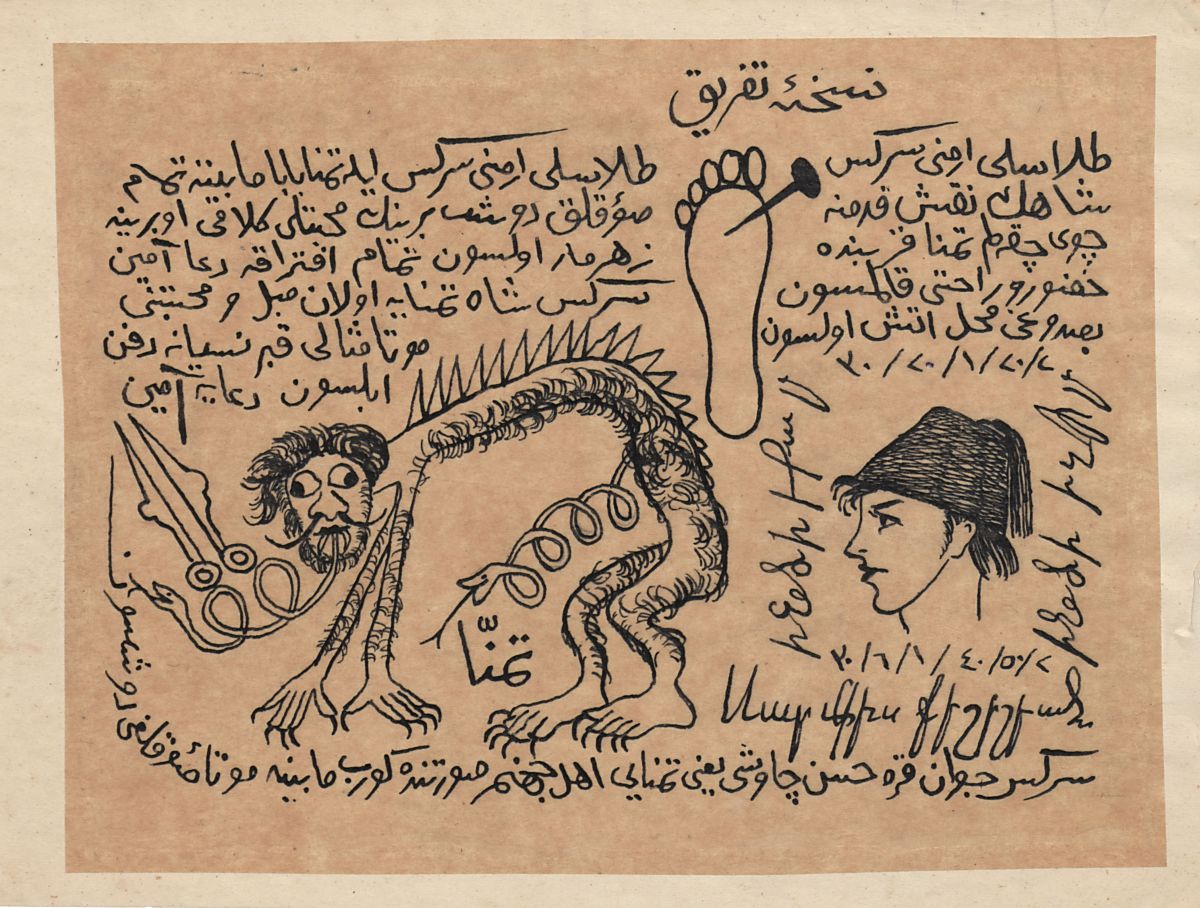
About the Archive
Reşad Ekrem Koçu and Istanbul Encyclopedia Archive is strange and unruly, just like the metropolis of Istanbul; in a sense, it is a “bad” archive. The badness refers to more than the disorganization stemming from Koçu’s deprivation and isolation, the diminishing of the archive after his passing as the archive was sold off piece by piece, and the damage of time. A “good” archive has the measurement and determination to sort out elements that are “important enough to be recorded in history.” A good archive produces and conserves unique claims of identity, being, and meaning about the past and tries to sustain these claims. It derives power and authority from this power-establishing curatorial quality: The past’s truth, in a sense, is determined as much by what is included in the archive as what is left out of it. However, what is left out is never destroyed. A good archive emerges better off from a persistent, conflicting, intense, in short, fervent process, and the discipline of history alludes to this “healthy” appearance. One should not forget that both Reşad Ekrem Koçu and his archive remain outside of the discipline. The archive in question is strange and unruly because it had never overcome this fervent process.
According to the art historian Semavi Eyice, “One of the primary reasons the Istanbul Encyclopedia remained unfinished was its dedication of long pages to people who were not important enough to be recorded in history and the inclusion of poems either written by these people or written about them.” Eyice is correct as a historian, but his determination also proves the significance of this strange and unruly archive: At least some of those who would never otherwise be deemed important enough to be recorded in history are collected in Koçu’s archive.
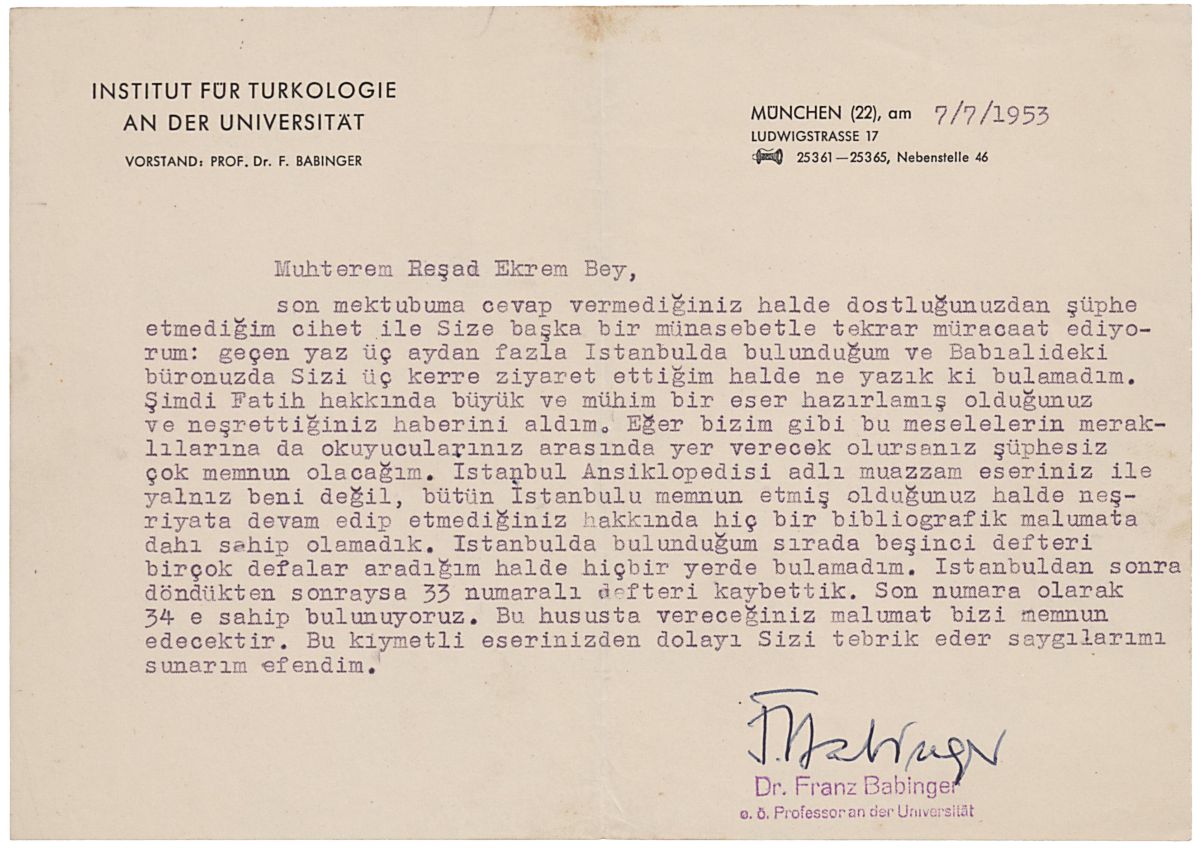
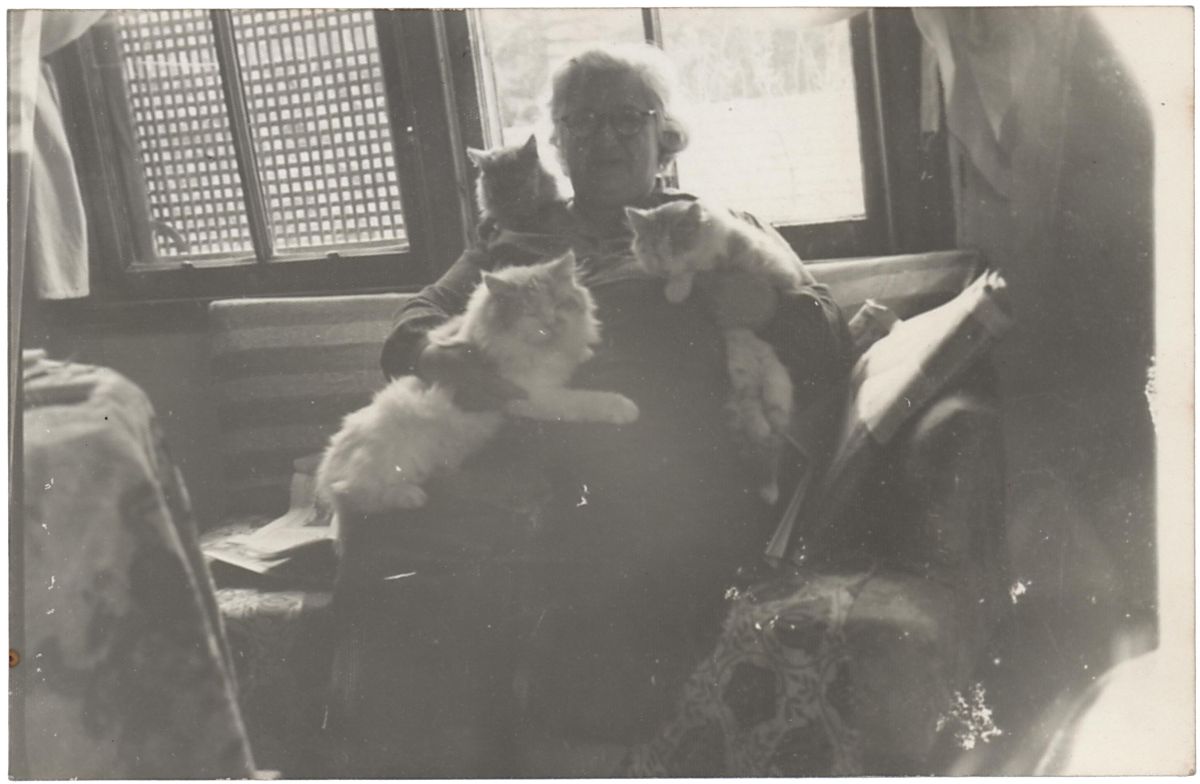
On Life: Private and Public
One should not rely on categories, especially when Reşad Ekrem Koçu is the subject. The distinctions between novelist and historian, literature and history, memoir and history, private and public, and photography and illustration become blurry in the Koçu corpus. What makes his production and him striking is precisely this “informal” blurriness. The archive includes a group of materials on Koçu’s “private” life and photographs of his family and circle of friends. Considering the photographs of his older sister and her cats, alongside four newspaper clippings and the articles he wrote for his column Gün İçinde Tarih [History of the Day] at the end of 1971 and beginning of 1972 to mark his sister’s death anniversary could be helpful to position Koçu’s production. In the second article of this short series of memoir-history-literature-cultural analysis, he writes, “[…] between 1941 and 1943, I had begun to write epistles on my dear sister’s cats in the form of biographies; 15 cats’ biographies […].” The number of cats reached up to 42; no other records of them could be found in the archives.
A series of photographs—most of which are by Foto Sel, a studio Koçu had good relations with—and some correspondences also carry a similar ambiguity. These photographs are interesting as they reveal the close attention Koçu paid to the people on the street and the “lowlives” and serve as models for the illustrations in the encyclopedia. The correspondences with influential researchers, including Sedad Hakkı Eldem, Franz Babinger, Ali Sami Ülgen, and his newspaper readers constitute a small part of the letters in the archive.
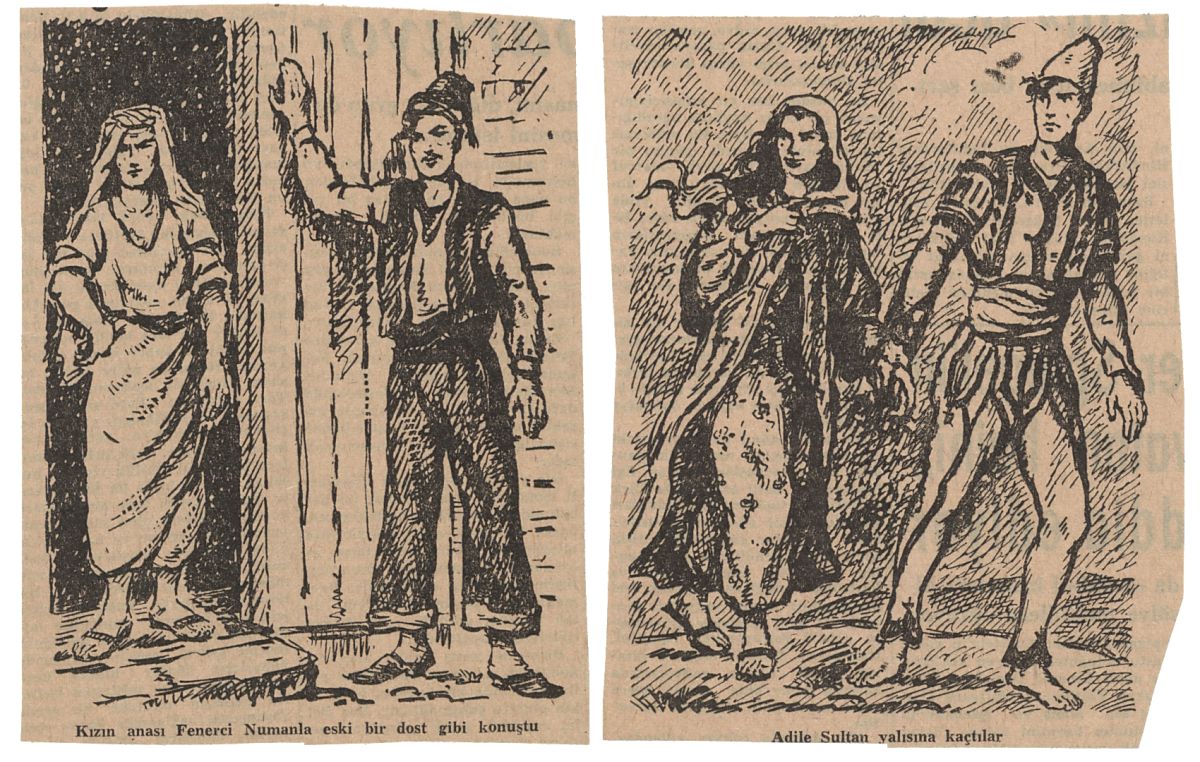
On the Encyclopedia: From G to Z and Before
The archive comprises lists, drafts, notes, clippings, and drawings related to unpublished articles of the Istanbul Encyclopedia between the letters G and Z, alongside original materials from the printed volumes and resources on Koçu’s production in general, photographs, correspondences, and manuscript drafts.
The lists of articles organized by their order or by their illustrations in the encyclopedia volumes, or the secondary lists that include the note “Istanbul hammams from at least a hundred years ago” reveal Koçu’s working method and present clues on the design stage of his encyclopedia and unfinished projects. On the other hand, these lists—constantly revised, updated, and expanded—prove the impossibility of publishing the whole of the encyclopedia and that it would always be incomplete.
Almost all of Koçu’s efforts are for the encyclopedia. However, some materials appear in other media with minor or significant differences, or, in reverse, some materials end up in the encyclopedia through various media: hundreds of clippings of columns and articles and a few book manuscripts. The draft manuscripts of books on Istanbul mosques and hammams have striking qualities in terms of the efforts to gather materials and their form, though they point to an expected trajectory in Koçu’s production as these topics are also among the typical components of the encyclopedia. Yet, these small-scale publication drafts are particularly striking in their treatment of figures such as Vişnezadeli Benli Hürmüz, Kösem Sultan, and Bıçakçı Petri.
The archive also features a series of documents on “serious” issues such as the publication of the fascicles, their marketing and distribution, economic difficulties, and general indifference, and a few materials on Koçu’s struggle with the Illustrated Istanbul Encyclopedia, a “copy-competitor” limited by a lack of imagination.

On Imagination
The materials on the encyclopedia’s graphic language and page layouts constitute a small section of the archive. The illustrations, as the most defining element of the publication’s visual language, are so many that they would require a separate study. Hundreds of illustrations produced by numerous illustrators, with many by Sabiha Bozcalı, across all of Koçu’s publications, including the published and unpublished volumes of the encyclopedia, form a substantial part of the archive. Issues around the relationship between the illustrations and the photographs, clippings, engravings, and miniatures, the creative use of copying, techniques of collage and montage, the imagination of historical figures and events through visual tools beyond what is afforded by the texts, and the meandering of the illustrations across publications with partial adjustments await discussion within the context of the archive.
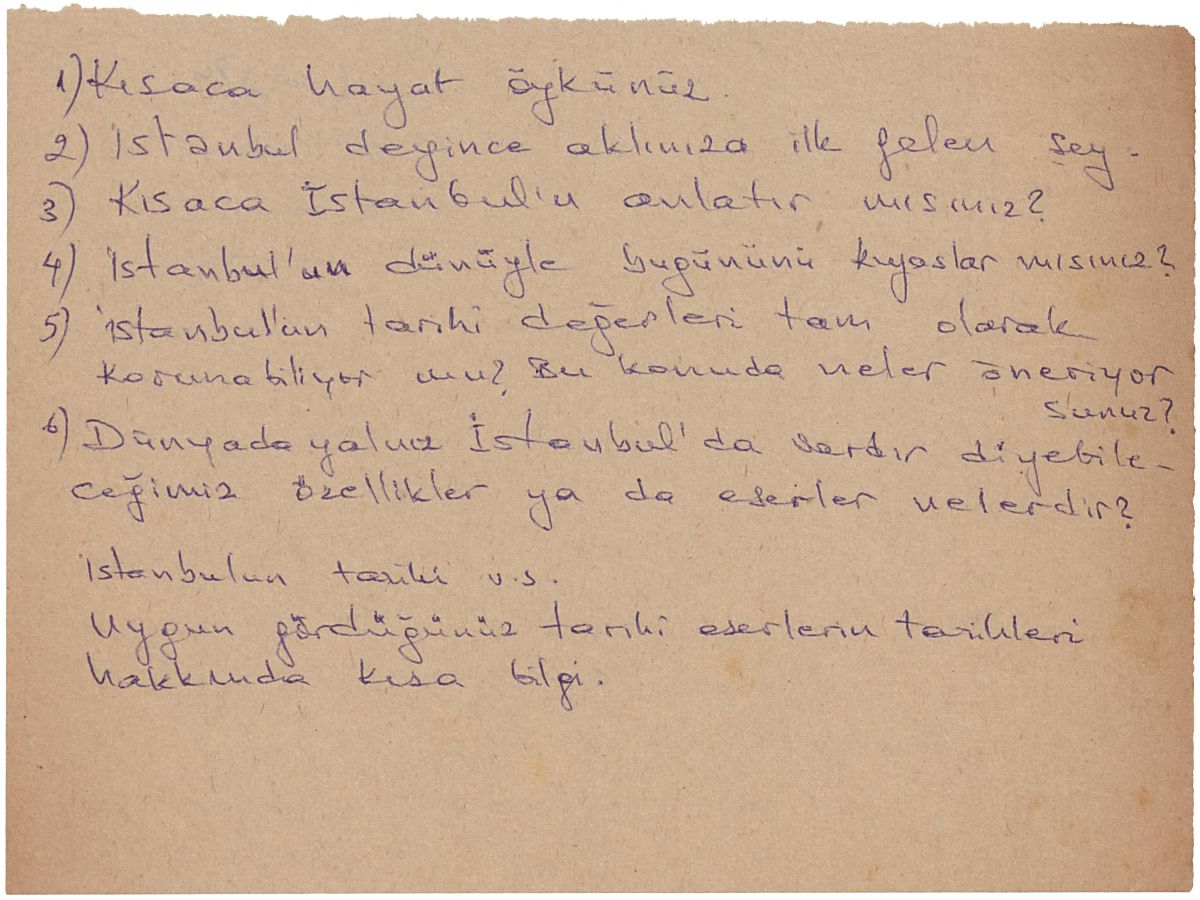
On Resources
A group of materials in the archive addresses the resources used for the encyclopedia by the historian and contributors. Even though the content is limited here, Reşad Ekrem Koçu’s “unserious” attitude can also be traced in these materials. The transcription copy of the boatmen’s record dated 1802-1803, the list of mosques and masjids recorded in the book Hadîkatül Cevâmi, magazines (montage/collage) produced from news clippings that Koçu was a fan of, and the correspondence with the General Directorate of Prisons and Detention Houses have been archived together. Mehmed Küçük of Şile, whose contribution to the encyclopedia in 1945-1946 remains unclear, Machinist Şinasi, İsmail Hakkı Göktürk, Sabiha Bozcalı, and Ali Nüzhet Göksel are listed together without paying heed to their varying historical significance.
The traces of the partial oral histories from folkloric resources that Koçu accessed through Vâsıf Hiç constitute one of the most exciting parts in the archive. Encompassing notebooks in which various texts by folk poets and narrators of legends, such as Hüseyin Agha of Galata, Âşık İbrahim of Erzurum, and Âşık Râzi recorded what could be defined as the “low-life” folklore of Istanbul, this body of materials were passed on to Koçu by Vâsıf Hiç, a folk poet himself, alongside his notes and information he gathered. Although most of Hiç’s notes and notebooks have not reached our day, the drafts and articles Koçu collated from this material include vital clues. A unique surviving manuscript, Berbernâme, has a quality that could shed light on the missing parts of the archive. Beyond a historian’s archive, Reşad Ekrem Koçu and Istanbul Encyclopedia Archive is remarkable for tracing this bohemian crowd, of which Koçu could be considered one of the last representatives.
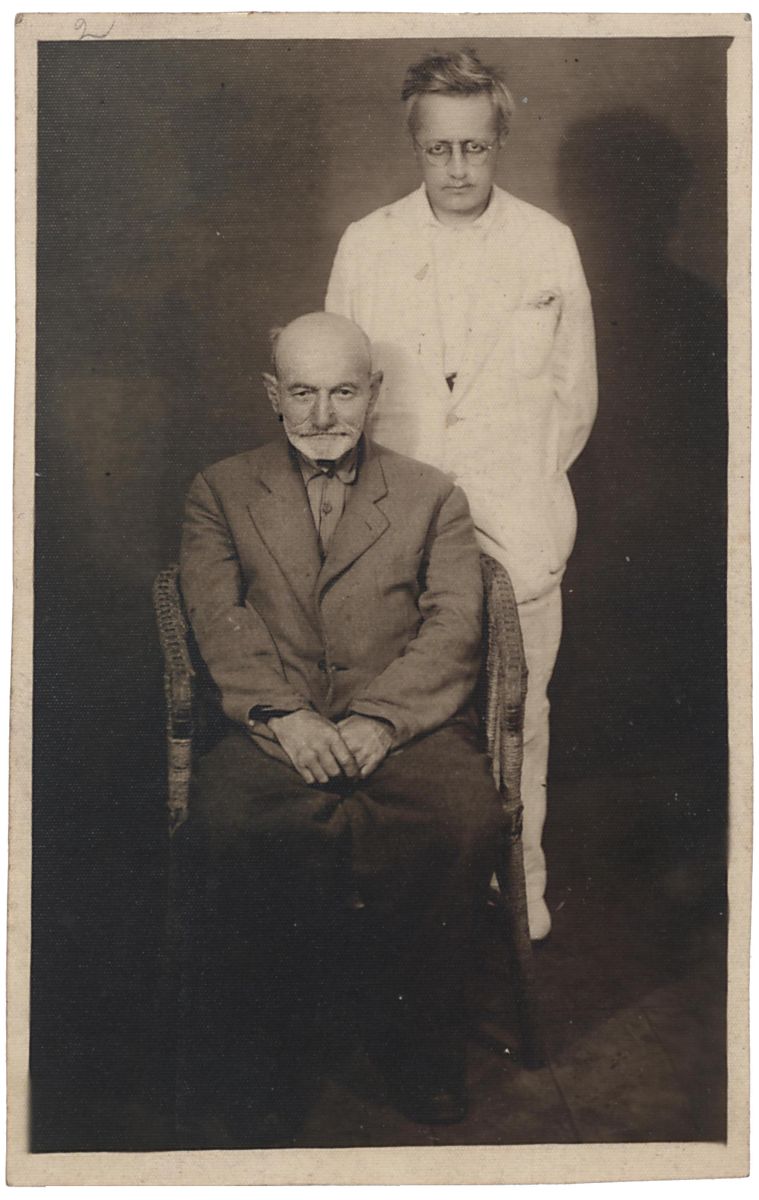
*This article is compiled from the texts of the exhibition No Further Records: Reşad Ekrem Koçu and Istanbul Encyclopedia Archive, shedding light on the unpublished sections of the Istanbul Encyclopedia to which historian and novelist Reşad Ekrem Koçu (1905-1975) devoted most of his life.

Portraits of Reşad Ekrem Koçu
Kadir Has University Information Center – Salt Research, Reşad Ekrem Koçu and Istanbul Encyclopedia Archive
Kadir Has University Information Center – Salt Research, Reşad Ekrem Koçu and Istanbul Encyclopedia Archive
About Reşad Ekrem Koçu
Reşad Ekrem Koçu was born in Istanbul in 1905. He graduated from the Bursa High School in 1921 and the Istanbul University Faculty of Literature History Department in 1931. He was the student and assistant of Ahmed Refik Altınay, and when Altınay was removed from his position in 1933, as the university reform went into effect, Koçu resigned from the newly established university. He taught history at the Kuleli Military High School, Vefa High School, and Pertevniyal High School. In addition to his experience as a history teacher, he made a living by contributing articles to newspapers such as Cumhuriyet, Yeni Sabah, Milliyet, Hergün, Yeni Tanin, and Tercüman and magazines including Hayat Tarih Mecmuası, Resimli Tarih Mecmuası, Tarih Dünyası, Hayat, Yeşilay, Büyük Doğu, Hafta, Türk Folklor Araştırmaları, and İstanbul Enstitüsü Mecmuası. He published historical novels and novelized monographs on historical characters. In November 1944, he began publishing the fascicles of the Istanbul Encyclopedia, which he defined as the “grand register of the city,” focusing on historical, geographic, architectural, literary, folkloric, and cultural topics. He said of the encyclopedia: “As of now, I will squander my life on it,” and continued working on it until the end of his life. After 34 fascicles were published intermittently, he had to take a break in 1951 due to financial reasons. The encyclopedia was relaunched beginning with the first fascicle in 1958, and this adventure lasted 173 fascicles and 11 volumes. Ending on the article Gökçınar (Mehmed), the fascicle dated 1973 marked the end of the Istanbul Encyclopedia’s publishing life. Koçu passed away two years later, on July 6, 1975, and was buried in the Sahrayıcedid Cemetery. The historian lost the mansion he inherited from his father, his money, and his health to form Istanbul’s “grand register.” The location of his grave could never be determined.

Armenian Serkis of Talas, drawn by the coffee house owner Georgian Nusret in the Istanbul Prison for his anthology titled Zindan Şiirleri [Dungeon Poems], with talismans by Somuncu Baba
Kadir Has University Information Center – Salt Research, Reşad Ekrem Koçu and Istanbul Encyclopedia Archive
Kadir Has University Information Center – Salt Research, Reşad Ekrem Koçu and Istanbul Encyclopedia Archive
About the Archive
Reşad Ekrem Koçu and Istanbul Encyclopedia Archive is strange and unruly, just like the metropolis of Istanbul; in a sense, it is a “bad” archive. The badness refers to more than the disorganization stemming from Koçu’s deprivation and isolation, the diminishing of the archive after his passing as the archive was sold off piece by piece, and the damage of time. A “good” archive has the measurement and determination to sort out elements that are “important enough to be recorded in history.” A good archive produces and conserves unique claims of identity, being, and meaning about the past and tries to sustain these claims. It derives power and authority from this power-establishing curatorial quality: The past’s truth, in a sense, is determined as much by what is included in the archive as what is left out of it. However, what is left out is never destroyed. A good archive emerges better off from a persistent, conflicting, intense, in short, fervent process, and the discipline of history alludes to this “healthy” appearance. One should not forget that both Reşad Ekrem Koçu and his archive remain outside of the discipline. The archive in question is strange and unruly because it had never overcome this fervent process.
According to the art historian Semavi Eyice, “One of the primary reasons the Istanbul Encyclopedia remained unfinished was its dedication of long pages to people who were not important enough to be recorded in history and the inclusion of poems either written by these people or written about them.” Eyice is correct as a historian, but his determination also proves the significance of this strange and unruly archive: At least some of those who would never otherwise be deemed important enough to be recorded in history are collected in Koçu’s archive.

Dr. Franz Babinger’s letter to Reşad Ekrem Koçu
Kadir Has University Information Center – Salt Research, Reşad Ekrem Koçu and Istanbul Encyclopedia Archive
Kadir Has University Information Center – Salt Research, Reşad Ekrem Koçu and Istanbul Encyclopedia Archive

Reşad Ekrem Koçu’s sister and her cats
Kadir Has University Information Center – Salt Research, Reşad Ekrem Koçu and Istanbul Encyclopedia Archive
Kadir Has University Information Center – Salt Research, Reşad Ekrem Koçu and Istanbul Encyclopedia Archive
On Life: Private and Public
One should not rely on categories, especially when Reşad Ekrem Koçu is the subject. The distinctions between novelist and historian, literature and history, memoir and history, private and public, and photography and illustration become blurry in the Koçu corpus. What makes his production and him striking is precisely this “informal” blurriness. The archive includes a group of materials on Koçu’s “private” life and photographs of his family and circle of friends. Considering the photographs of his older sister and her cats, alongside four newspaper clippings and the articles he wrote for his column Gün İçinde Tarih [History of the Day] at the end of 1971 and beginning of 1972 to mark his sister’s death anniversary could be helpful to position Koçu’s production. In the second article of this short series of memoir-history-literature-cultural analysis, he writes, “[…] between 1941 and 1943, I had begun to write epistles on my dear sister’s cats in the form of biographies; 15 cats’ biographies […].” The number of cats reached up to 42; no other records of them could be found in the archives.
A series of photographs—most of which are by Foto Sel, a studio Koçu had good relations with—and some correspondences also carry a similar ambiguity. These photographs are interesting as they reveal the close attention Koçu paid to the people on the street and the “lowlives” and serve as models for the illustrations in the encyclopedia. The correspondences with influential researchers, including Sedad Hakkı Eldem, Franz Babinger, Ali Sami Ülgen, and his newspaper readers constitute a small part of the letters in the archive.

Illustrations for the article Hürmüz (Vişnezadeli Benli)
Kadir Has University Information Center – Salt Research, Reşad Ekrem Koçu and Istanbul Encyclopedia Archive
Kadir Has University Information Center – Salt Research, Reşad Ekrem Koçu and Istanbul Encyclopedia Archive
On the Encyclopedia: From G to Z and Before
The archive comprises lists, drafts, notes, clippings, and drawings related to unpublished articles of the Istanbul Encyclopedia between the letters G and Z, alongside original materials from the printed volumes and resources on Koçu’s production in general, photographs, correspondences, and manuscript drafts.
The lists of articles organized by their order or by their illustrations in the encyclopedia volumes, or the secondary lists that include the note “Istanbul hammams from at least a hundred years ago” reveal Koçu’s working method and present clues on the design stage of his encyclopedia and unfinished projects. On the other hand, these lists—constantly revised, updated, and expanded—prove the impossibility of publishing the whole of the encyclopedia and that it would always be incomplete.
Almost all of Koçu’s efforts are for the encyclopedia. However, some materials appear in other media with minor or significant differences, or, in reverse, some materials end up in the encyclopedia through various media: hundreds of clippings of columns and articles and a few book manuscripts. The draft manuscripts of books on Istanbul mosques and hammams have striking qualities in terms of the efforts to gather materials and their form, though they point to an expected trajectory in Koçu’s production as these topics are also among the typical components of the encyclopedia. Yet, these small-scale publication drafts are particularly striking in their treatment of figures such as Vişnezadeli Benli Hürmüz, Kösem Sultan, and Bıçakçı Petri.
The archive also features a series of documents on “serious” issues such as the publication of the fascicles, their marketing and distribution, economic difficulties, and general indifference, and a few materials on Koçu’s struggle with the Illustrated Istanbul Encyclopedia, a “copy-competitor” limited by a lack of imagination.

Sketches for the article Haralambo (Meyhaneci)
Kadir Has University Information Center – Salt Research, Reşad Ekrem Koçu and Istanbul Encyclopedia Archive
Kadir Has University Information Center – Salt Research, Reşad Ekrem Koçu and Istanbul Encyclopedia Archive
On Imagination
The materials on the encyclopedia’s graphic language and page layouts constitute a small section of the archive. The illustrations, as the most defining element of the publication’s visual language, are so many that they would require a separate study. Hundreds of illustrations produced by numerous illustrators, with many by Sabiha Bozcalı, across all of Koçu’s publications, including the published and unpublished volumes of the encyclopedia, form a substantial part of the archive. Issues around the relationship between the illustrations and the photographs, clippings, engravings, and miniatures, the creative use of copying, techniques of collage and montage, the imagination of historical figures and events through visual tools beyond what is afforded by the texts, and the meandering of the illustrations across publications with partial adjustments await discussion within the context of the archive.

The list of questions compiled by Reşad Ekrem Koçu to collect information for the Istanbul Encyclopedia
Kadir Has University Information Center – Salt Research, Reşad Ekrem Koçu and Istanbul Encyclopedia Archive
Kadir Has University Information Center – Salt Research, Reşad Ekrem Koçu and Istanbul Encyclopedia Archive
On Resources
A group of materials in the archive addresses the resources used for the encyclopedia by the historian and contributors. Even though the content is limited here, Reşad Ekrem Koçu’s “unserious” attitude can also be traced in these materials. The transcription copy of the boatmen’s record dated 1802-1803, the list of mosques and masjids recorded in the book Hadîkatül Cevâmi, magazines (montage/collage) produced from news clippings that Koçu was a fan of, and the correspondence with the General Directorate of Prisons and Detention Houses have been archived together. Mehmed Küçük of Şile, whose contribution to the encyclopedia in 1945-1946 remains unclear, Machinist Şinasi, İsmail Hakkı Göktürk, Sabiha Bozcalı, and Ali Nüzhet Göksel are listed together without paying heed to their varying historical significance.
The traces of the partial oral histories from folkloric resources that Koçu accessed through Vâsıf Hiç constitute one of the most exciting parts in the archive. Encompassing notebooks in which various texts by folk poets and narrators of legends, such as Hüseyin Agha of Galata, Âşık İbrahim of Erzurum, and Âşık Râzi recorded what could be defined as the “low-life” folklore of Istanbul, this body of materials were passed on to Koçu by Vâsıf Hiç, a folk poet himself, alongside his notes and information he gathered. Although most of Hiç’s notes and notebooks have not reached our day, the drafts and articles Koçu collated from this material include vital clues. A unique surviving manuscript, Berbernâme, has a quality that could shed light on the missing parts of the archive. Beyond a historian’s archive, Reşad Ekrem Koçu and Istanbul Encyclopedia Archive is remarkable for tracing this bohemian crowd, of which Koçu could be considered one of the last representatives.

Reşad Ekrem Koçu, with Vâsıf Hiç
Kadir Has University Information Center – Salt Research, Reşad Ekrem Koçu and Istanbul Encyclopedia Archive
Kadir Has University Information Center – Salt Research, Reşad Ekrem Koçu and Istanbul Encyclopedia Archive
*This article is compiled from the texts of the exhibition No Further Records: Reşad Ekrem Koçu and Istanbul Encyclopedia Archive, shedding light on the unpublished sections of the Istanbul Encyclopedia to which historian and novelist Reşad Ekrem Koçu (1905-1975) devoted most of his life.
- 1.Excerpt from Reşad Ekrem Koçu's text in the 30th fascicle of the Istanbul Encyclopedia, published between 1944-1951.

